Assessing risks arising from severe weather is no different from other workplace risk assessments, other than employers should consider risks arising from employees travelling to and from their workplace and potential harm that might be caused by unnecessary commuting.
Storms and other adverse weather events come with only three or four days’ notice, so any steps employers can take to be prepared for such eventualities will make life easier when harsh weather hits.
All employers should have a severe weather policy in place to ensure arrangements can be put in place quickly as soon as storms are predicted. The Scottish Government and the STUC have published a Severe Weather Fair Work Charter providing guidance and measures employers, and their workers, should consider when preparing for storms and other adverse weather events.
Scottish Hazards views effective voice as the underpinning dimension of Fair Work, and the only one where legislation exists that places legal obligations on employers to consult with workers. The Safety Representatives and Safety Representative Committee Regulations 1977 apply to workplace where trade unions are recognised, while the less effective Health and Safety (Consultation with Employees) 1996 apply in non-unionised workplaces.
Additionally, all employers have a duty under the Management of Health and Safety Regulations 1999 (Regulation 3) to carry out a suitable and sufficient assessment of risks their employees are exposed to at work. Scottish Hazards argues that assessment of risk in relation to adverse weather should include those associated with potential harm arising from commuting, a hazard that would not normally fall within health and safety protections.
Our experience of the way employers reacted to Storm Eowyn is not positive, although we would stress this relates to a small minority of employers and most seem to have followed and understood the red weather warning issued by the Met Office.
Employers ignoring the warnings failed to understand red weather warnings signify significant disruption and danger to life and, by the very fact that they are rarely issued should have served as a reminder to these employers of their legal obligation to assess the health and safety impact of severe weather events on their employees and not just the potential adverse impact on their business.
Risk assessments need not be complicated if there is a severe weather policy in place, crucially the policy as well as any risk assessment should be developed in consultation with staff.
So, what should a severe warning risk assessment consider
- Identify the Hazards – Severe weather creates two types of hazards, natural hazards arising from storms include flooding, gales and extremes of temperatures. Natural hazards, in turn, create potential workplace hazards such as damage to workplaces.
- Decide who might be harmed and how – what harms could be caused to employees, clients, customers and others. Consider the likelihood of harm as well as the severity. Consideration should be given to individual employee’s circumstances, such as workers with disabilities or underlying health conditions as well as parents of school age children and alternative methods of working during the period a weather warning is in place should also be an option for all workers.
- Evaluate the risks and decide on precautions – control measures should be put in place to mitigate the risk of harm, while at the same time allowing for business continuity where the employer delivers essential services such as health and social care. In the case of red weather warnings offering taxis to work should not be seen as a suitable control measure, this only extends the risk of harm to taxi drivers. Suitable control measures subject to consultation with workers might include working from home, reallocation of shifts with workers staying closest to the workplace swap with colleagues who may have difficulties getting to work and arrangements made for accommodation to be provided, but only where the service being delivered are genuinely essential with the agreement of the employee.
- Record your significant findings – employers who employ 5 or more workers must document significant finding arising from their risk assessment including proposed measures planned to mitigate risk of harm.
- Review your assessment and update if necessary – any severe storm risk assessment should be updated when adverse conditions change, MET Office weather warnings may change as the adverse conditions develop, for example, if a yellow warning is escalated to amber, or red. Keeping up to date with Met Office social media @metoffice could be a useful way of informing your risk assessment as well as identifying when changing circumstances require a review.
Scottish Hazards cannot overemphasize the importance of consultation on all health and safety matters, genuine consultation involves listening to staff concerns, giving careful thought to them and any suggestions they may have and providing feedback as well as reasons why their suggestions cannot be taken on board.
Too many employers confuse consultation with communication of predetermined decisions. Adopting the latter approach and ignoring the employee voice is a sign of a disrespectful employer who cares little about the health, safety and security of their workers and cold not careless if their workers feel fulfilled at work.
If have suffered at work leading up to and during Storm Eowyn give us a phone on 0800 0015 022, alternatively complete the STUC’s Severe Weather Survey https://bit.ly/STUC_Severe_Weather_Survey .
They are not, and probably never will be Fair Work employers.

Leave a Reply
You must be logged in to post a comment.